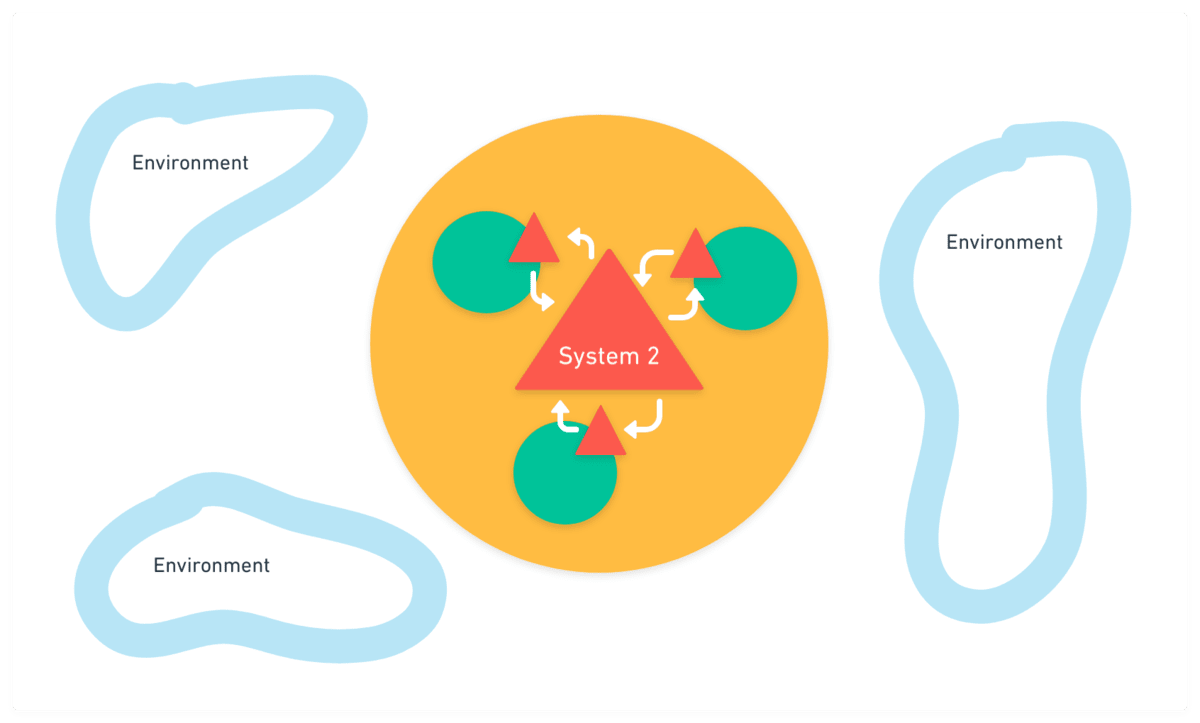TB871: Enhancing Organisational Coordination with System 2 of the VSM
Note: this is a post reflecting on one of the modules of my MSc in Systems Thinking in Practice. You can see all of the related posts in this category.
One of the most common issues in organisational management is the absence of an effective System 2 (The Open University, 2020). This component, as described in the Viable System Model (VSM), is crucial for creating and maintaining the framework within which the primary activities happen. Without an effective System 2, organisations often face inefficiency and disruption to their operations.

The primary function of System 2 is to coordinate and stabilise operations (see diagram). This involves creating a framework to guide the activities of the organisation. Unlike a top-down, hierarchically-imposed framework, which often fails due to a lack of understanding at higher levels, an effective System 2 emerges from ongoing conversations between management and sub-management levels. A collaborative approach ensures that the framework is practical and grounded in the realities of the organisation’s operations.
Coordination problems arise from a lack of common standards or the way language is used within an organisation (Hoverstadt, 2020). There are plenty of examples of this, such as NASA’s Mars probe incident, which failed due to a mix-up between metric and imperial measurements. While this was a hugely expensive, embarrassing, and very public failure, there are daily problems around coordination and communication within organisations that could be solved, or at least mitigated, via a standardised framework.
System 2 also helps balance the need for common standards with the need for flexibility. Organisations need to find a balance between how rigid their support functions are and the adaptability of their operational activities. Maintaining this balance is essential for ensuring coordination without stifling innovation and responsiveness.
It’s worth remembering that the VSM is a conceptual model rather than a prescriptive methodology. As such, it is both useful for diagnosis and design — and then compare real-world situations with the ideal model, identifying weaknesses and mismatches.
To illustrate this, and to continue the example from previous posts, let’s consider a software development organisation. The lead developer manages the development team, while the product manager oversees client interactions and timelines. Each level addresses its specific challenges, which ensures the organisation functions cohesively. This recursive pattern simplifies management processes and enhances overall effectiveness.
So, effective System 2 management involves several key activities:
- Establishing common standards and frameworks for coordination.
- Facilitating ongoing conversations between different management levels to maintain a practical and adaptable framework.
- Ensuring that internal activities and external environmental factors are synchronised to prevent oscillations and disruptions.
- Preventing sub-management from optimising their activities at the expense of the organisation’s overall functioning.
In software development, lead developer developers focus on code quality and technical coherence, while the product manager ensures that client requirements and deadlines are met. Coordination between these roles is essential to avoid scenarios where technical excellence leads to missed deadlines, or rapid delivery results in poor-quality code. System 2 must ensure that all parts of the organisation work together harmoniously, even if this seems counterintuitive.
Essential components of System 2 in a software development company include:
- Agreed frameworks for coding standards and project management methodologies.
- Defined roles and responsibilities, including clear communication channels between developers, testers, and project managers.
- Standards for code review processes, version control, and continuous integration.
In software development, these frameworks might include coding standards, project management methodologies, and communication protocols between developers and stakeholders.
In summary, System 2 of the VSM helps ensure effective coordination, maintain practical frameworks, and balance competing needs for standardisation and flexibility. The approach not only addresses internal complexities but also adapts to external environmental factors, promoting a resilient and responsive organisational structure.
References
- Hoverstadt, P. (2020). ‘The Viable System Model’. In Reynolds, M. & Holwell, S. (eds.) (2020). Systems Approaches to Making Change: A Practical Guide. London: Springer, pp.89-138.
- The Open University (2020) ‘3.3.3 Applying System 1’, TB871 Block 3 Tools stream [Online]. Available at https://learn2.open.ac.uk/mod/oucontent/view.php?id=2261487§ion=4.3 (Accessed 26 June 2024).

